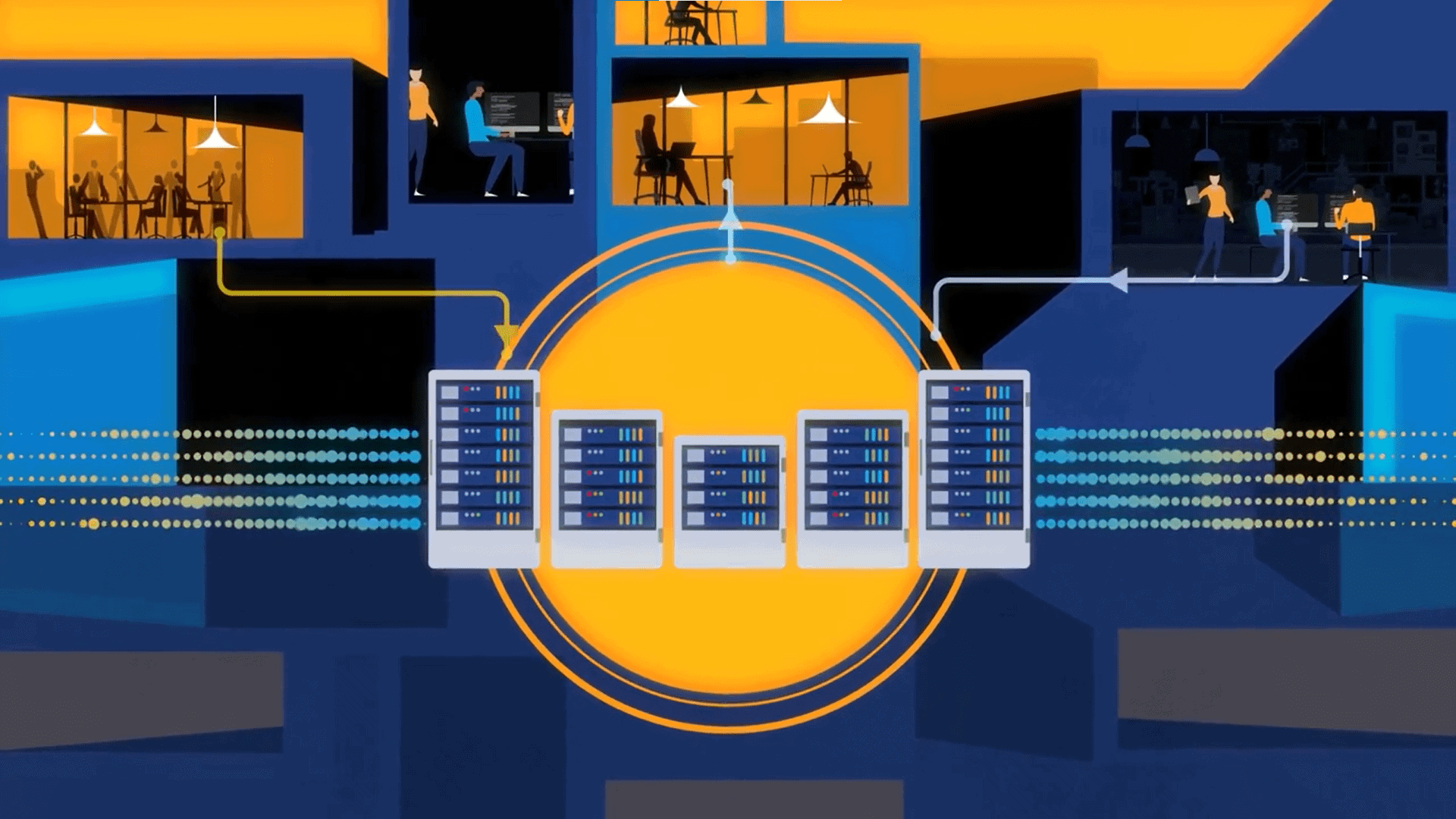
The enterprise data stack is at an inflection point. Storing and streaming data is no longer enough. Businesses need a combination of streaming technologies, high-performance in-memory databases, and adaptive intelligence to support real-time enterprise operations.
Enterprises today generate more data than ever, including telemetry streams from devices, customer interactions, application logs, network events, and other data sources. Much of this data is being generated at the edge. Unfortunately, traditional data architectures are not built to keep up with this torrent. What’s needed is a new take on the data stack.
Why? Historically, organizations have relied on a layered approach where they would collect data at the edge, move it into storage, and then batch it for analysis in a centralized data center or cloud. While this model is effective for historical insights, it falls short when enterprises need to act on the data in real-time or near real-time.
What’s needed is a next-generation enterprise data stack that goes beyond storage and streaming. It must be able to make decisions and adapt in real-time. The model must blend streaming technologies, edge computing, and adaptive intelligence in a way that enables organizations to process data at the speed of events, where it’s generated, and act on it dynamically.
See also: The Modern Data Stack Needs a Complete Overhaul – Here’s Why
Why the Traditional Data Stack Falls Short
The old paradigm of “collect, store, and analyze later” is too slow and too expensive for today’s real-time use cases. Consider telecom operators managing 5G networks, manufacturers deploying predictive maintenance solutions, or financial institutions combating fraud. In these industries, the value of data decays within seconds, sometimes milliseconds. Delays in decision-making result in missed opportunities, suboptimal customer experiences, and increased risks.
Traditional stacks introduce multiple friction points:
- Latency from shuttling data between the edge, cloud, and data center.
- The cost of moving and storing massive volumes of data that may never be needed.
- Rigidity from rules-based systems that can’t adapt to changing conditions or anomalies.
A modern data stack must overcome these barriers by processing, analyzing, and adapting data in real-time, closer to where the data originates.
The Architecture of Adaptive Edge Intelligence
Building a data stack for adaptive edge intelligence requires more than just bolting AI onto existing infrastructure. It demands a rethinking of the pipeline, with three tightly integrated layers: streaming, in-memory decisioning, and adaptive intelligence.
1. Streaming Technologies
Event streaming platforms such as Apache Kafka or Pulsar form the nervous system of the modern data stack. They capture high-velocity data from diverse sources, such as IoT devices, network logs, applications, and user interactions, and deliver it reliably to downstream systems. Streaming ensures enterprises never miss a beat, no matter how fast or unpredictable the flow of events.
2. High-Performance In-Memory Databases
To transition from streaming to decision-making, enterprises require a system that can process data with extremely low latency. This is where in-memory databases come in. Unlike traditional databases that rely heavily on disk I/O, in-memory databases store and manipulate data directly in RAM, enabling millisecond or even sub-millisecond response times. This makes them ideal for powering mission-critical decisions at the edge.
3. Adaptive Intelligence
AI and machine learning models provide adaptive capability. These models don’t just apply static rules; they evolve with context, learning from patterns and recalibrating as conditions change. For example, an adaptive intelligence system in manufacturing can learn to distinguish between harmless fluctuations in sensor readings and true anomalies that signal equipment failure. The result: more accurate, real-time decisioning.
Together, these three layers form the foundation of a modern adaptive edge intelligence architecture.
Industry Impact of the Next-Gen Data Stack
In general, there is a need for a next-gen data stack across many industries. Most face similar issues where reducing latency and enabling adaptive intelligence can help. However, different industries have their own particular challenges, many of which can be addressed with the implementation of a modern data stack. Examples include:
Telecom
Telecom operators are under pressure to deliver ultra-low-latency services, such as AR/VR, connected vehicles, and mission-critical IoT. By combining streaming, in-memory databases, and adaptive intelligence, operators can dynamically allocate network resources, predict congestion, and prevent service disruptions in real-time.
Manufacturing
Factories equipped with sensors and robotics generate terabytes of operational data daily. An adaptive data stack enables predictive maintenance, real-time quality control, and supply chain optimization. The ability to make decisions at the edge enables faster anomaly detection and fewer costly disruptions.
Financial Services
In financial services, fraud detection must happen in the blink of an eye. A next-generation data stack can analyze transaction streams, cross-check them against models, and block fraudulent activity before it is completed, thereby avoiding losses and protecting customers.
Energy and Utilities
Adaptive edge intelligence helps energy providers balance grid demand, integrate renewable energy sources, and prevent outages. Real-time adjustments improve both efficiency and resiliency in critical infrastructure.
Working with a Technology Partner
While the architectural vision is compelling, enterprises need technologies that can operationalize it. The lack of in-house expertise or resources can slow the implementation of any effort to modernize the data stack.
For that reason, many enterprises are teaming with a technology partner, one that brings suitable solutions and the expertise to deploy and operate adaptive intelligence. That’s where Volt Active Data can help. It delivers the in-memory, high-performance decisioning layer that makes adaptive intelligence feasible at scale.
Key Advantages of Volt Active Data:
- Ultra-Low Latency: Volt processes streaming data in-memory with millisecond-level consistency, ensuring decisions happen quickly enough to matter.
- Massive Throughput at Scale: Designed for high-velocity event processing, Volt can handle millions of decisions per second, a critical capability for telecom, fintech, and IoT use cases.
- Edge-Ready Resiliency: Volt’s lightweight, highly available architecture enables it to run close to the data source, whether in distributed edge nodes or hybrid cloud environments.
- Event-Driven Integration: Volt integrates seamlessly with streaming platforms like Kafka, enabling a smooth transition from event ingestion to real-time action.
- Adaptive Workflows: Volt supports embedding AI/ML models directly into decision flows, allowing enterprises to implement adaptive intelligence without sacrificing speed.
In practice, Volt Active Data has enabled telcos to support real-time subscriber management for 5G, fintech companies to block fraud before transactions settle, and manufacturers to detect anomalies on production lines without interrupting operations. By bridging the gap between streaming and intelligence, Volt enables enterprises to utilize data effectively in real-time.
A Final Word
The enterprise data stack is at an inflection point. Storing and streaming data is no longer enough; businesses must decide and adapt at the speed of events. The combination of streaming technologies, high-performance in-memory databases, and adaptive intelligence represents the future of real-time enterprise operations.































